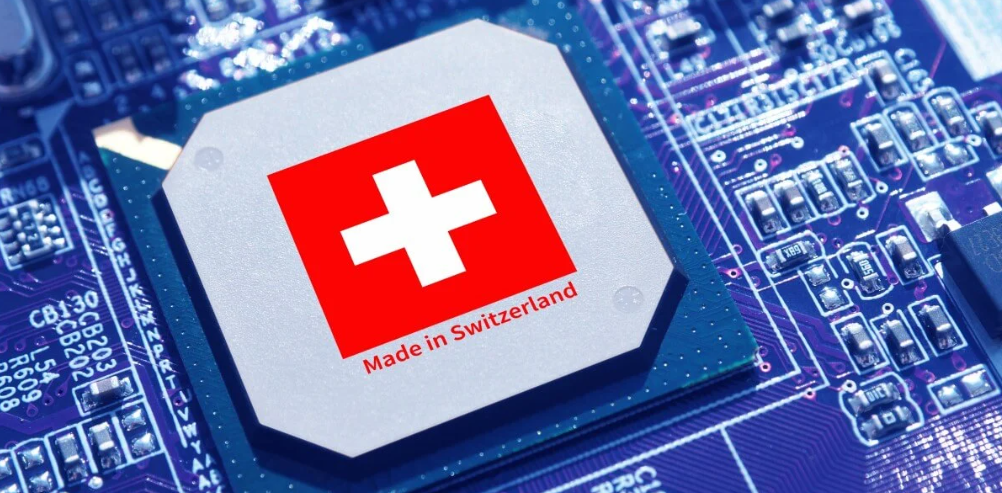 Add My Company
Add My Company

Amid China's growing focus on Taiwan, Switzerland unveils the SwissChips initiative, a strategic countermove to help secure the West’s future semiconductor supply. But what does the Swiss strategy entail, how does it dovetail with other global efforts and how effective will it be?
Across the western world governments are investing heavily in semiconductor research, design and manufacturing capabilities. Innovating countries and powerful trading blocs are looking to free themselves from dependence on unpredictable, international chip supply chains.
US and EU have already invested heavily in their semiconductor sectors
The US Chips Act represents a significant investment by the United States in its technology industry, with nearly $53 billion allocated towards semiconductor manufacturing, research and development. This investment aims to revitalize the US's position in semiconductor production, fostering innovation and securing the supply chain. The act has already spurred over $166 billion in semiconductor and electronics investments within a year of its implementation, showcasing its substantial impact on the industry.
Meanwhile, the European Union has committed to a fund of €43 billion to enhance its semiconductor capabilities, reflecting a robust effort to strengthen its own technology sector and maintain competitiveness on a global scale.
Non EU countries in Europe have developed parallel strategies
Smaller countries, like Britain and Switzerland, who are outside the EU, have also announced their own funding to improve their strategic access to cutting-edge semiconductor tech. But the UK’s £1 billion fund looks a bit puny in relation to the US’s $280 billion - and the Swiss budget of ₣33.8 million, even more so.
So, what’s the aim of the new Swiss strategy and how successful can it be?
What is the SwissChips initiative?
Introduction to the initiative
- Designed as a strategic measure to strengthen Switzerland's position in the global semiconductor industry.
- Launched in response to Switzerland's exclusion from significant EU research programs like Horizon and Digital Europe, highlighting the necessity for independent innovation drives.
Funding and duration:
- The initiative is set for an initial phase from 2024 to 2026, demonstrating a commitment to mid-term development goals within the semiconductor sector.
- Financial backing includes CHF 26 million from the State Secretariat for Education, Research and Innovation (SERI), supplemented by CHF 7.8 million each from pivotal Swiss research institutions: CSEM, EPFL, and ETH Zurich.
Objectives and strategic focus:
- Aimed at catalysing research and innovation in critical areas such as semiconductor technologies, microelectronics, and integrated circuit (IC) design.
- Seeks to create a comprehensive network among Swiss institutions, facilitating widespread access to advanced technological resources and infrastructure.
- Focused on not just bolstering the national industry but ensuring its sustainability and global competitiveness.
- Targeted Areas for Technological Advancement:
- Prioritizes breakthroughs in 6G communications, aligning with global trends towards faster, more reliable connectivity solutions.
- Emphasizes the development of autonomous IoT devices, highlighting a push towards smarter, more integrated technology ecosystems.
- Envisions addressing both current and future challenges within the semiconductor domain, positioning Switzerland at the forefront of innovation and industry leadership.
The SwissChips initiative is highly targeted - but it can’t secure chip autonomy on its own
While the investment itself is relatively small compared to the US and EU efforts, the Swiss plan has specific strategic objectives designed to help place the country at the forefront of cutting-edge developments.
In this, it hopes to become an indispensable partner for larger economies around the world, with more freedom and independence from an old, technological eco-system whose security is increasingly threatened by China.
- Innovation and design leadership: Switzerland targets becoming a leader in advanced semiconductor technologies through research and innovation, focusing on creating valuable intellectual property and technologies for various industries.
- Diversification of the semiconductor ecosystem: The SwissChips initiative aims to diversify Switzerland's semiconductor ecosystem, leveraging higher education and research institutions to enhance technological breadth and resilience.
- Strengthening domestic capabilities: By prioritizing R&D, Switzerland plans to build a more resilient domestic semiconductor industry, potentially developing specialized manufacturing capabilities to lessen international supply dependencies.
- Collaborative efforts and strategic partnerships: Collaborations between SERI, CSEM, EPFL, and ETH Zurich highlight a strategic approach to pooling resources and expertise to address both technological innovation and supply chain resilience.
- Attracting global talent and investment: Switzerland's emphasis on semiconductor research and innovation is designed to draw global talent and investment, reinforcing its semiconductor industry's position and economic stability amidst supply chain challenges.
Will the SwissChips initiative be enough?
Given their non-EU status, Switzerland and the UK are pursuing highly targeted strategies for future semiconductor autonomy. However, the global nature of supply chains and continued reliance on non-native critical raw materials means their success remains closely linked to different economies around the world. The challenges to reimagine semiconductor supply chains and materials is beyond just one country.
The SwissChips initiative represents a deliberate investment welcomed by the local tech community. Nonetheless, for significant advancements in semiconductor technology and to ensure growth, collaboration and shared investments with European Union countries will be crucial.
For more information on Can the SwissChips Act shield the nation's semiconductor supply chain? talk to ESCATEC Mechatronics Ltd

